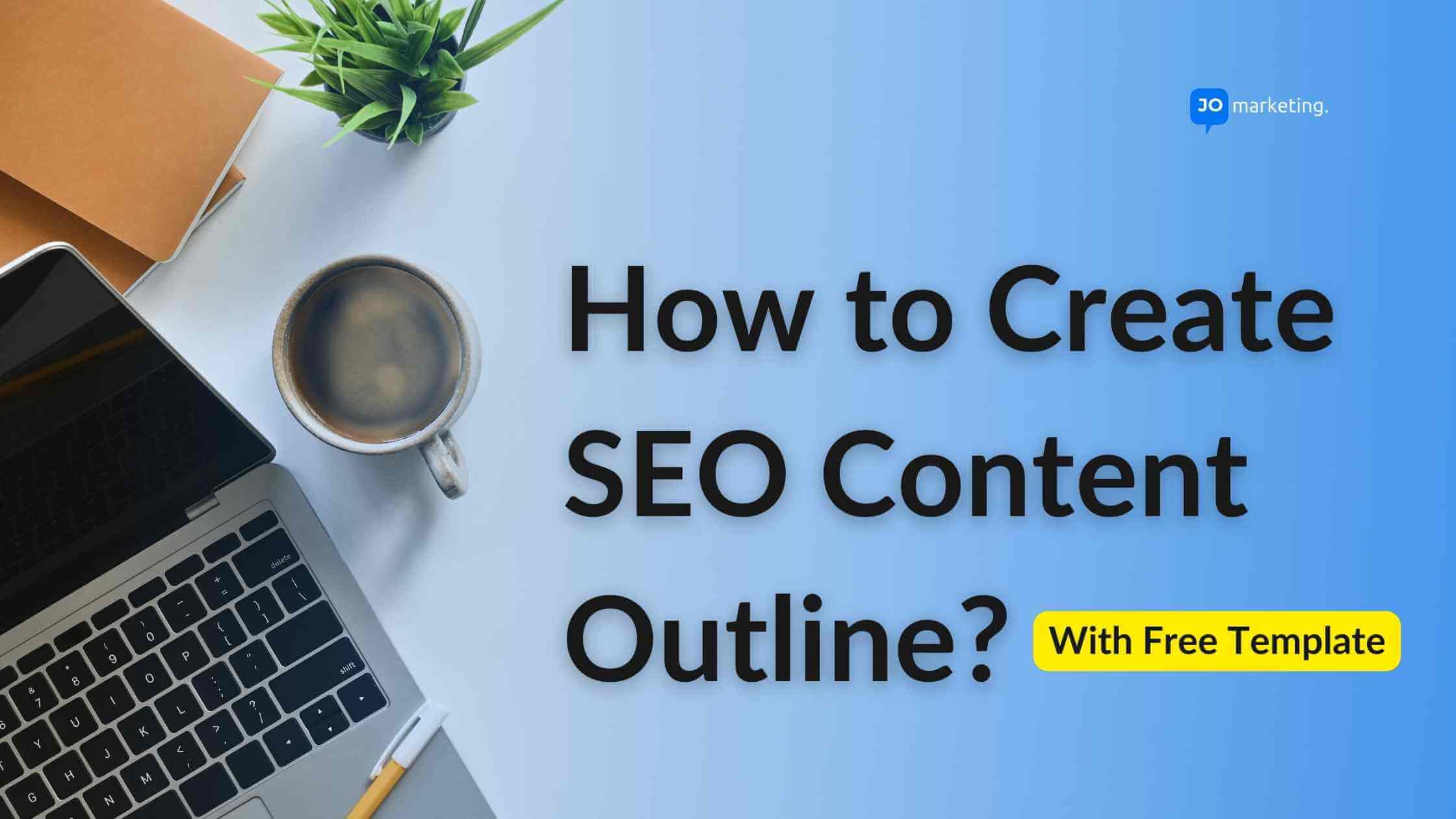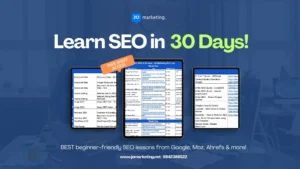Anyone dabbling in content creation knows a golden rule: stellar content on your website boosts your shot at climbing the ranks in search engine results pages (SERPs). It’s like hitting the jackpot in the SEO world.
But let’s be honest, mastering SEO writing is no walk in the park. To really make it work, you need to consistently whip up content that not only charms the search engines but also captivates your audience.
Here’s a secret weapon to juggle user expectations with SEO demands: content outlining. Think of it as your roadmap to efficient writing, smoother workflows, and a coveted spot on Google’s first page. In this article, we’ll dive into how to create SEO content outline that can elevate your content game and streamline the often overwhelming process of content production.
Plus, we’ll hand you a step-by-step template to guide your SEO writing adventures.
Buckle up, it’s time to create content that clicks!
Discover SEO with guidance from an SEO expert and receive a complimentary consultation today!
Basics: What is Content Outline, and Why is It Important in SEO?
Creating a content outline is like drafting a blueprint for a building—it structures your ideas, ensuring everything necessary is included and flows logically.
Content outlining isn’t just useful—it’s essential for crafting SEO content that grabs the attention of search engines and deeply engages your readers.
Imagine your content outline as the master blueprint, not only guiding each step of your writing but also supporting your entire content strategy like the foundation of a skyscraper.
To propel your web content to the summit of search engine rankings, every article must adhere to the strict standards of quality and relevance demanded by search engines.
There are numerous tactics to refine your SEO writing, and a robust content outline serves as your reliable navigator. It ensures you check off each essential element for SEO success, every time.
Yet, an outline does so much more than simply organize your ideas or structure your article’s main points. It intricately weaves together all the vital elements of effective SEO writing, transforming it into a tool in the content creation arsenal.
Your outline will guide your research, shape your narrative flow, and ensure that keyword integration feels both strategic and effortless. This approach guarantees that every piece of content you craft isn’t just well-written—it’s perfectly tuned for both search engines and human eyes.
Get a comprehensive SEO Audit today and unleash the true potential of your website! Contact us now!
Where do I Start to Create an SEO Content Outline?
Think of this process as tailoring a bespoke suit—it’s all about precision and personalization for your content’s target audience. Here’s how to ensure your content not only meets but exceeds SEO standards:
Step 1: Set the Stage with Location and Tools
Kick things off by using VPN or Incognito Mode. Set your digital locale to your client’s target country to taste the local search landscape.
Step 2: Keyword Research and SERP Analysis
Start with comprehensive keyword research to identify high-impact keywords relevant to your content.
Ensure you have: Secondary Keywords, and Entities to strengthen the content’s semantic relevance for SEO.
Understand the search intent behind your primary keyword; What kind of SEO title is Google preferring to your primary keyword for top 5 rankings.
- Is it Listicle? Eg: Top 5, 5 Best…. etc.
- Is it Wh words? Eg: What.How-tos… etc.
- Is it just a primary keyword?
- Does it have a location on it?
Step 3: Competitor Analysis in SERP
Scope out the competition! Identify who’s winning the SEO battle in your field and learn from their strategies.
- Examine the headings your competitors have used in their content.
- Pay attention to H1, H2, and H3 tags for insight into their content structure.
- Note the topics covered in their headings to understand their content focus.
Step 4: PAA Extraction with a Twist
Utilize tools like the “Detailed SEO Extension” to pull third-level People Also Ask (PAA) questions. These nuggets of curiosity are perfect for expanding your content’s breadth and depth.
- Focus on extracting relevant questions that can be incorporated into your content.
- Utilize PAA data to generate additional H2s, H3s, or FAQs in your content.
Step 5: Content Enhancement
Make your content the king of the hill by going above and beyond what your competitors offer. Weave in comprehensive insights and cover angles they’ve missed. More is more when it comes to information!
Step 6: Google Impressiveness
Aim to impress! Google loves content that serves as a one-stop shop for information seekers.
- Support your claims with solid data from reputable sources—think statistics, case studies, and real-life examples that make your content pop.
- Aim for a comprehensive and authoritative piece.
Step 7: Structured Content Layout
Organize your content like a pro.
- Structure headings in bullet points (Nestled structure) for H1, H2, H3s and so on.
- Ensure you include which is H1, H2 or H3
- FAQs questions should always be H3.
Step 8: Leverage AI
Don’t shy away from using AI to fine-tune your content structure. Let AI suggestions infuse your planning stage with efficiency and innovation.
Step 9: SEO Title and Meta Descriptions
Nail those first impressions with killer SEO titles and meta descriptions. Make sure your primary keyword features prominently. Craft titles that grab attention and meta descriptions that call readers to action, all while reflecting the true value of your content.
- Must include primary keyword in SEO Title and Meta Description.
- Craft compelling SEO titles and meta descriptions that align with Google preferences.
- Include primary keywords naturally and provide a clear call-to-action in the meta description.
- Ensure meta tags accurately reflect the content’s value and relevance to users.
Step 10: Let Your Content Outline Reflect E-E-A-T!
When enhancing your content, let the principle of E-E-A-T (Experience, Expertise, Authoritativeness, and Trustworthiness) guide your outline. Here’s how you can make this happen:
Experience: Share personal anecdotes or case studies that showcase real-world applications of your topic. This adds a layer of relatability and demonstrates your hands-on knowledge and involvement.
Expertise: Delve into the technical aspects or lesser-known details of your topic. Use data, research, and well-founded analysis to back your points, establishing your content as a go-to resource.
Authoritativeness: Strengthen your authority by citing reputable sources, linking to leading research, and referencing industry experts. Show that your content is informed by the best in the field.
Trustworthiness: Build trust by being transparent about your sources and honest about where your knowledge comes from. Also, ensure your content is consistently accurate and reliable.
By embracing these strategies, you’re not just creating content; you’re crafting experiences that attract both search engines and real-world users. Get ready to see your content soar to the top of the SERPs!
SEO Content Outline Format
The basic SEO content outline format is like a trusty roadmap for structuring your written content—it’s clear, logical, and incredibly organized.
Next is the introduction, where you lay out the purpose and significance of your piece and tease what’s to come.
As you delve into the main body, it’s neatly divided into headings and subheadings. Each heading tackles a major topic, while subheadings dive deeper, exploring the nitty-gritty details. Under these subheadings, you’ll sprinkle in bullet points or brief descriptions highlighting specific points, examples, or data—these are your signposts.
Your adventure in writing concludes with a compelling conclusion that neatly wraps everything up, summarizing your content and echoing the main points.
The example of SEO Content Outline is as follows:
- Title of the Document: [Provide a brief title that captures the essence of the content.]
- About the Company: [Describe the company, its expertise, and its industry focus.]
- Core Audience: [List the primary geographical or demographic targets for the content.]
- Description of the Post: [Summarize the purpose of the article and what the reader will gain by reading it.]
- Topic: [State the central topic of the content.]
- Language Preference: [Specify the language variation appropriate for the audience, e.g., US English, UK English.]
- Audience: [Detail who the content is specifically aimed at, such as industry professionals, general consumers, etc.]
- Search Intent: [Clarify the intent behind the content – informative, persuasive, transactional, etc.]
- Page Type: [Indicate the type of content, such as blog post, article, product page, etc.]
- Tone of Voice: [Describe the desired tone, such as professional, casual, authoritative, etc.]
- Primary Keyword: [List the main keyword that the content should rank for.]
- Secondary Keywords: [List additional keywords that support the primary keyword.]
- Recommended Word Count: [Suggest a range for the total word count based on competitive analysis and content depth needed.]
- Recommended Image Count: [Recommend how many images to include for optimal engagement and SEO.]
- SEO Meta Title: [Provide a concise and appealing SEO title using the primary keyword.]
- SEO Meta Description: [Craft a compelling meta description that incorporates the primary keyword and summarizes the article’s value.]
- Content Outline:
- H1: Main Title of the Article
- H2: Introduction
- Brief overview of the topic
- Importance of the topic in the industry
- H2: Main Content Section 1 (e.g., Benefits, How-to, Explanation)
- H3: Subtopic or Point 1
- H3: Subtopic or Point 2
- H3: Subtopic or Point 3
- H2: Main Content Section 2 (e.g., Challenges, Steps, Case Studies)
- H3: Subtopic or Point 1
- H3: Subtopic or Point 2
- H3: Subtopic or Point 3
- H2: Main Content Section (n)
- H2: Conclusion
- Summary of key points
Call to action or concluding thoughts
- Summary of key points
- Reference URLs:
- [List URLs for research, further reading, or source citations.]
- H2: Introduction
- H1: Main Title of the Article
How To Create SEO Content Outline Effectively?
Creating an effective content outline is crucial for engaging and SEO-friendly articles. An outline serves as a blueprint for your content and a strategic guide to ensure all essential elements are covered. Here’s how to construct a content outline to help your work stand out with readers and search engines.
Creating an effective SEO outline is crucial for crafting content that engages your audience and ranks well in search engine results. Here’s a simple, step-by-step guide to help you build an SEO-friendly content outline:
1. Understand Your Audience and Intent
Who are you writing for? Understanding your audience’s needs, questions, and pain points is crucial.
What is the purpose of the content? Whether it’s to inform, entertain, or sell, your content should align with the needs of your audience and the intent behind their search queries.
2. Conduct Keyword Research
Use tools like Google Keyword Planner, Ahrefs, or SEMrush to find keywords that your audience is searching for. Focus on long-tail keywords as they are less competitive and more specific.
Understand what users expect to find when they search for these keywords. Classify the keywords into four types of search intent, each with three examples:
Informational Intent: Users are looking for information.
- Example: “how to tie a tie”
- Example: “what causes rainbows”
- Example: “tips for first-time home buyers”
Commercial Intent: Users are considering a purchase and are looking for options and opinions.
- Example: “best smartphones 2024”
- Example: “top energy-efficient refrigerators”
- Example: “compare hybrid cars”
Transactional Intent: Users are ready to buy and are performing searches directly related to making a purchase.
- Example: “buy iPhone 14 online”
- Example: “discounts on hiking gear”
- Example: “book a flight to New York”
Navigational Intent: Users are trying to reach a specific website or page.
- Example: “Netflix login page”
- Example: “Download Zoom for Windows”
- Example: “Amazon customer service”
3. Draft a Working Title
Incorporate your main keyword and ensure the title is engaging and informative. Your title sets the expectation for the rest of the content.
4. Create Headings and Subheadings
Outline the main sections of your content based on your keyword research and content intent. Use H1, H2, and H3 tags strategically to structure your information hierarchically.
Organize sections in a logical order that builds on each point. Ensure there is a natural progression that guides the reader through the content.
5. Detail Each Section
Under each heading and subheading, list out specific points or topics to cover if needed. Include bullet points or short paragraphs that summarize what each section will discuss.
6. Incorporate Keywords Naturally
Spread your primary and related keywords throughout the headings, subheadings, and body while keeping the usage natural and relevant.
7. Include SEO Elements
Meta Description: Draft a concise meta description that includes the primary keyword. This will appear in search results and should entice users to click on your content.
Alt Text for Images: Plan to include images and provide alt text that describes each image, incorporating relevant keywords when appropriate.
Internal and External Links: Identify opportunities to link to other relevant content on your site (internal links) and authoritative external sources (external links) to enhance credibility and SEO.
8. Plan for Engagement and Conversion
Call to Action: Decide on the actions you want readers to take after reading your content. It could be subscribing, contacting, purchasing, or any other conversion goal.
Engagement Features: Consider adding interactive elements like quizzes, videos, or infographics that can make your content more engaging and shareable.
9. Review and Revise
Review your outline to ensure it comprehensively covers all necessary aspects of the topic. Look for any gaps in information or areas that need more detail.
Boost your website’s search engine rankings and drive organic traffic with JO Marketing’s SEO services. Contact us today to learn more!
Access Our Content Outline Template
Ready to streamline your content creation process and achieve better SEO results? JO Marketing has carefully designed Content Outline Template that is just what you need! It’s crafted to help you organize your thoughts systematically, ensuring that every piece of content you create is structured, engaging, and optimized for search engines.
How to Download and Use the Content Outline Template?
- Access the Template: Click on the link to our SEO Content Outline template to view the document.
- Make a Copy: In the Google Docs menu, go to File, then select Make a copy to save it to your own Google Drive.
- Customize Your Content: Modify the template as needed to suit your specific content needs and brand voice.
- Fill in Your Details: Use the prompts and structured sections to guide your content creation process.
- Review and Adjust: Go over your content to ensure accuracy, completeness, and SEO effectiveness.
- Publish Your Masterpiece: Once finalized, your content is ready to go live. Start engaging your audience with well-crafted material!
FAQs:
A content outline generator is a tool that helps you organize your writing by creating a structured outline. It breaks down your topic into main points and subpoints, making it easier to plan and organize your content before you start writing.
A complete content outline is like a roadmap for your writing. It lists all the main points and subpoints you want to cover in your content, organized logically. Think of it as the skeleton of your piece, giving you a clear direction and ensuring you don’t miss any important details.
When you create your content outline, first brainstorm the main topics or sections you want to cover. Then, organize them in a logical order to make your outline.
To create a better SEO content outline, understand your audience, research keywords, analyze top-ranking content, and incorporate clear headers.





